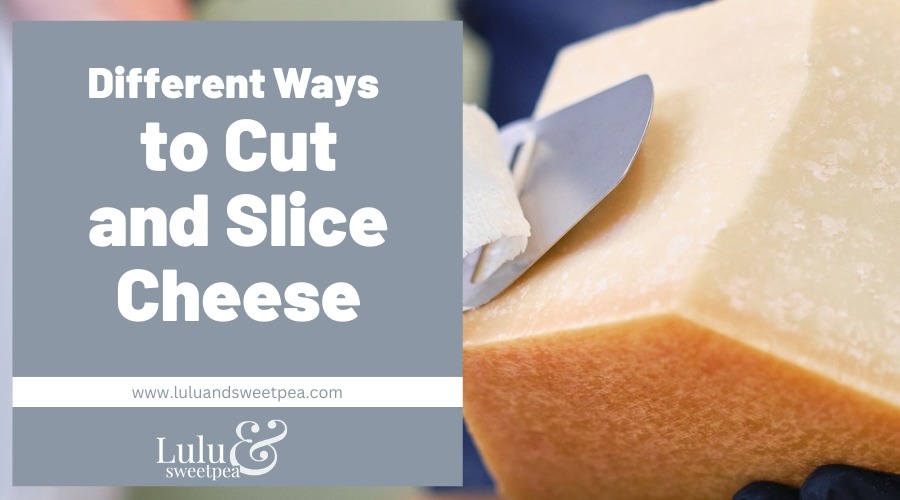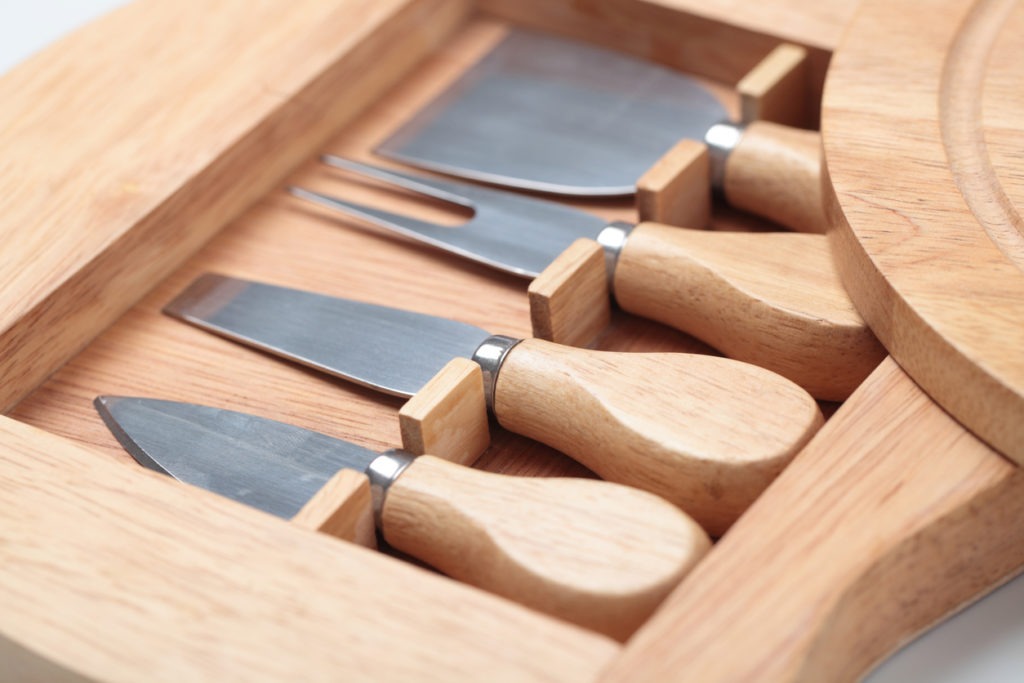There are many distinct types of cheese, particularly in France where it is well-known. Some cheeses have smooth textures, while others have gritty textures and occasionally have strong odors. Cheese is also used and served in a variety of ways, including as a spread, a cooking component, a topping, an appetizer, and a snack. There is little doubt that cheese is adored worldwide.
Did you know that there are various approaches to cutting and slicing cheese in addition to the various uses and serving options? At gatherings and celebrations, a variety of cheeses are frequently presented; accurate cutting is crucial. The form, texture, and hardness or softness of the cheese all affect how it should be cut. Just like with any other dish, presentation is crucial.
Here are some advice and tips to keep in mind when cutting or slicing cheese, before we discuss the various techniques:
- To each, use a different knife. Use a different knife for comte if you used one for a brie. Since the two types of cheese are so dissimilar, it is best to avoid blending the flavors because it will change the cheese’s flavor and scent.
- To make cheese cutting easier, it should be cut at room temperature.
- Cutting soft cheeses like Emmental and Raclette requires the use of wired cheese cutters.
Different Ways of Cutting and Slicing Cheese
1. Flat Round Cheese: Round cakes are cut the same way as round cheeses as camembert, reblochon, and coulommiers. It should be cut into three triangles. To cut it, start in the middle and move the knife outward.
2. Large Round Cheese: Large round cheeses like brie and some varieties of Coulommiers should be sliced like pies if you’re going to slice them. For a single serving, you will have a long, thin piece; if there is too much for one meal, you may split it in half and save the other half for another time.
3. Small Round Cheese: They can be divided into two parallel or horizontal halves if the cheese is small, spherical, and picodon-shaped. Additionally, they can be divided into a maximum of four pieces, providing each guest their own miniature pie.
4. Pyramid or Cylinder-Shaped Cheese: Cut this type of cheese similarly to how you would cut round or square cheese, but all the way through the cheese’s height. From the cheese’s very top to its very right bottom, slice the cheese into long, slender pieces. It should be divided into at least 8 portions.
5. Square or Heart-Shaped Cheese: If you’re slicing a square-shaped cheese, proceed as though you were slicing a cake: start with the diagonal cut, then divide each diagonal slice into triangles, then divide each triangle into halves. Start cutting a slice from the center of the cheese out if you are serving only yourself.
6. Hard and Semi-Hard Cheese: If you have a special cheese cutter at home or a vegetable peeler, you can use it to cut hard cheese. If you want to use them as a garnish for your dish, you can even grate them. The typical way parmesan cheese is presented is a nice illustration.
7. Cheese Wedge: Despite its appearance, cutting a cheese wedge is one of the simplest tasks. Slice the wedge very thinly from top to bottom, then place it flat-side-up. Beautiful cheese triangles will be the end result, perfect for dipping in jams or mustards.
8. Log-Shaped Cheese: Very soft cheese logs don’t always need to be chopped. Due to how soft and spreadable some varieties are, it’s frequently better to offer them whole with a spreader or soft cheese knife, allowing guests to cut their own pieces. However, cutting each log into a number of equal rounds is the optimum technique for pre-portioning. Use a soft cheese knife with a thin blade or cheese wire for this delicate work. As a result, the cheese won’t stick to the blade, crumble, or change shape.
Cheese Knives and Tools
Cheese knives might be a bit mysterious with their peculiar prongs and forms. But by using the right knife and using it correctly, you may improve the quality of your cheese board and simplify cutting and serving. Even though there are many different types and shapes of cheese knives, we couldn’t possibly cover them all. Instead, we’ll go over some of the fundamentals.
1. Pronged Cheese Knife: The pronged cheese knife can be compared to the little black dress of the cheese knife world because it goes with everything. This item is a necessity for every cheese board because of how easy it is to pick up and serve cheese chunks with the pronged tip.
2. Soft Cheese Knife: When you notice the holes, you’ll understand why this knife is a softy. Softer cheeses are more likely to stick to a sturdy knife due to their mushy inside. Try to find something with a very thin, sharp straight blade or a knife with holes to prevent sticking or mutilating the cheese when you cut.
3. Chisel Knife: This knife, which has the appearance of a little paddle, is a wonderful complement to any cheese board. When you want to serve bits of crumbly, hard cheeses with ease, reach for it.
4. Parmesan Knife: Despite the name, this knife excels when dealing with any type of hard cheese. It is simple to break off bits and nibbles thanks to the pointed tip.
5. Cheese Plane: This traditional slicer works well for shaving off paper-thin cheese samples for tasting. Extremely effective with both semi-soft and semi-hard kinds.
6. Cleaver: Although occasionally referred to as the “cheddar cleaver,” this tool need not be used exclusively with cheddar. Use it to quickly and efficiently cut up any cheese, from hard to semi-soft.
Conclusion
Like any other dish, cheese will seem more delicious and appetizing if it is cut and sliced properly. The difficulty is that cheese comes in a variety of forms, thicknesses, and textures. You can use many different kinds of cheese to create a stunning cheese display with a little work.

